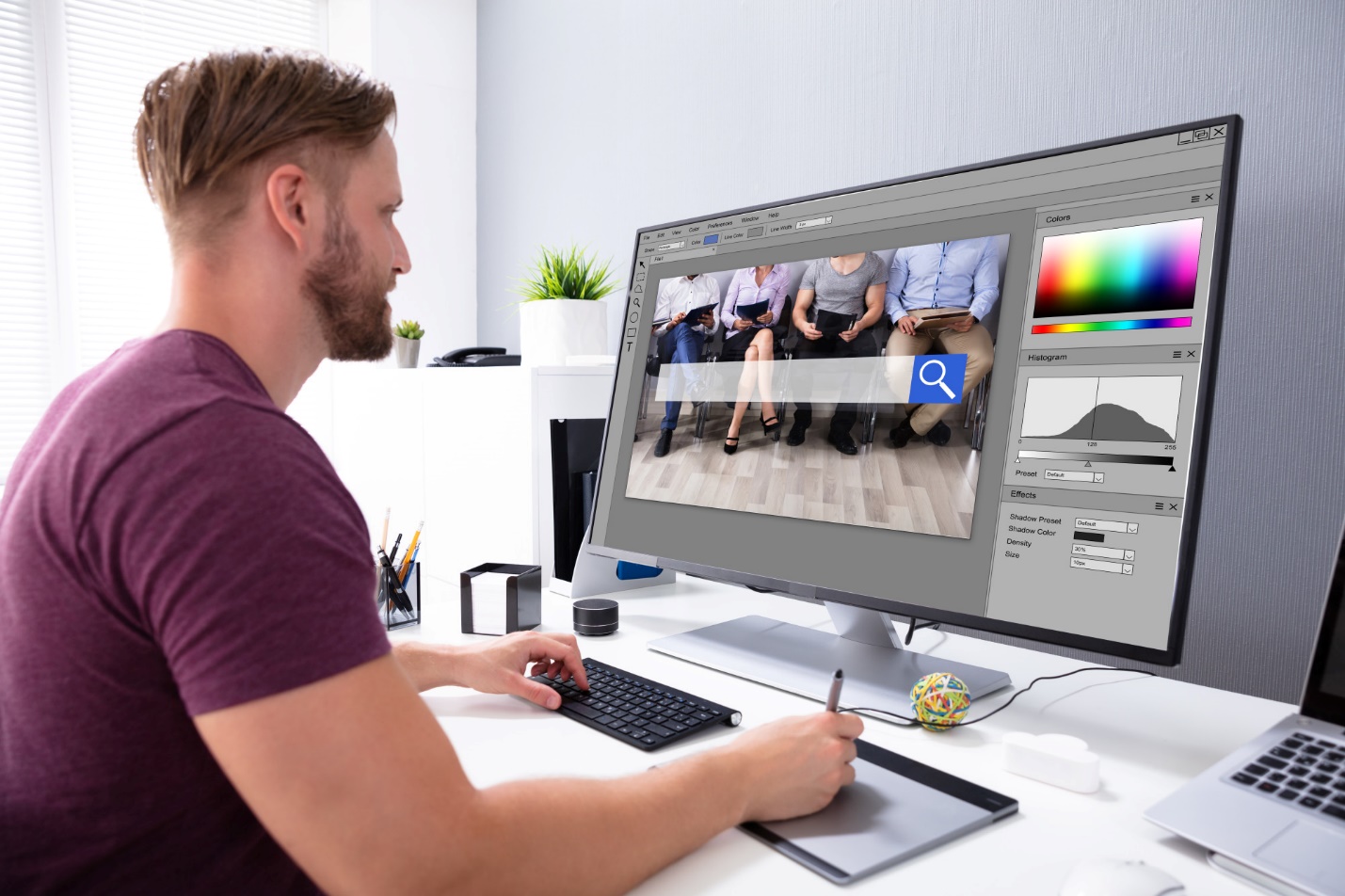Graphic design is a part of life that isn’t hard to witness every day. In fact, there are countless graphic design examples that surround us every day. Anything from logos to magazine layouts to movie posters and virtual environments typically requires graphic design.
Graphic design is continuously evolving with the changing face of technology. Perhaps that’s why graphic designers need the best computer for their creation process: to keep up with the flow of innovation.
If graphic design is part of your everyday life or is new to you, read on for a guide on the essential components of the best computer for graphic design.
Contents
1. Powerful Graphics Card
One of the most crucial components of the best computer for graphic design is a powerful graphics card. The graphics card is also known as the GPU (Graphics Processing Unit). It’s responsible for rendering images and videos. It handles the complex calculations required to display visual elements accurately and smoothly.
To ensure a seamless graphic design experience, look for a computer with a dedicated graphics card. A dedicated GPU has its own memory and processing power separate from the computer’s central processor (CPU). This division of labor allows the GPU to handle graphics-intensive tasks efficiently, freeing up the CPU to focus on other computations.
Aim for a graphics card with a significant amount of video RAM (VRAM), as it directly affects the computer’s ability to handle large files and process complex effects.
2. High-Resolution Display
As a graphic designer, having a high-resolution display is crucial to accurately visualize your designs. A computer with a low-screen resolution display may not do justice to your intricate creations, leading to inaccurate color representation and pixelated images.
Look for a computer with at least a Full HD (1920×1080) display, but if your budget allows, consider upgrading to a 4K screen resolution (3840×2160) or even higher.
Additionally, pay attention to the display’s color accuracy. Look for a monitor that covers a wide color gamut, such as Adobe RGB or DCI-P3 color spaces. When designing infographics, you should give this a-try.
Using these color spaces ensure that the colors you see on the screen are true to life. It also ensures that the output matches the colors that will be reproduced in print or on other devices.
3. Sufficient Storage and Memory
Graphic design projects often involve working with large files, whether it’s high-resolution images, videos, or complex design software. It’s essential to have a computer with sufficient storage and memory to handle these demanding tasks efficiently.
Look for a computer with a solid-state drive (SSD) rather than a traditional hard disk drive (HDD). An SSD offers faster read and write speeds, which translates into quicker file access and software loading times.
In terms of storage capacity, aim for at least 512GB or higher, depending on the size of your projects and the amount of data you need to store. Ensure that the computer has an adequate amount of RAM (Random Access Memory). A minimum of 16GB is recommended for smooth multitasking and efficient handling of resource-intensive software.
Unleash Your Creative Potential With the Best Computer for Graphic Design
For any graphic designer, the best computer for graphic design is essential for producing high-quality work. Make sure to consider factors such as RAM, storage, processor, and graphics when choosing a computer for graphic design. Don’t forget to prioritize your budget and needs. In the end, you’ll be able to find the best computer for your graphic design needs!
You can find more great tips on technology and more on our website!

